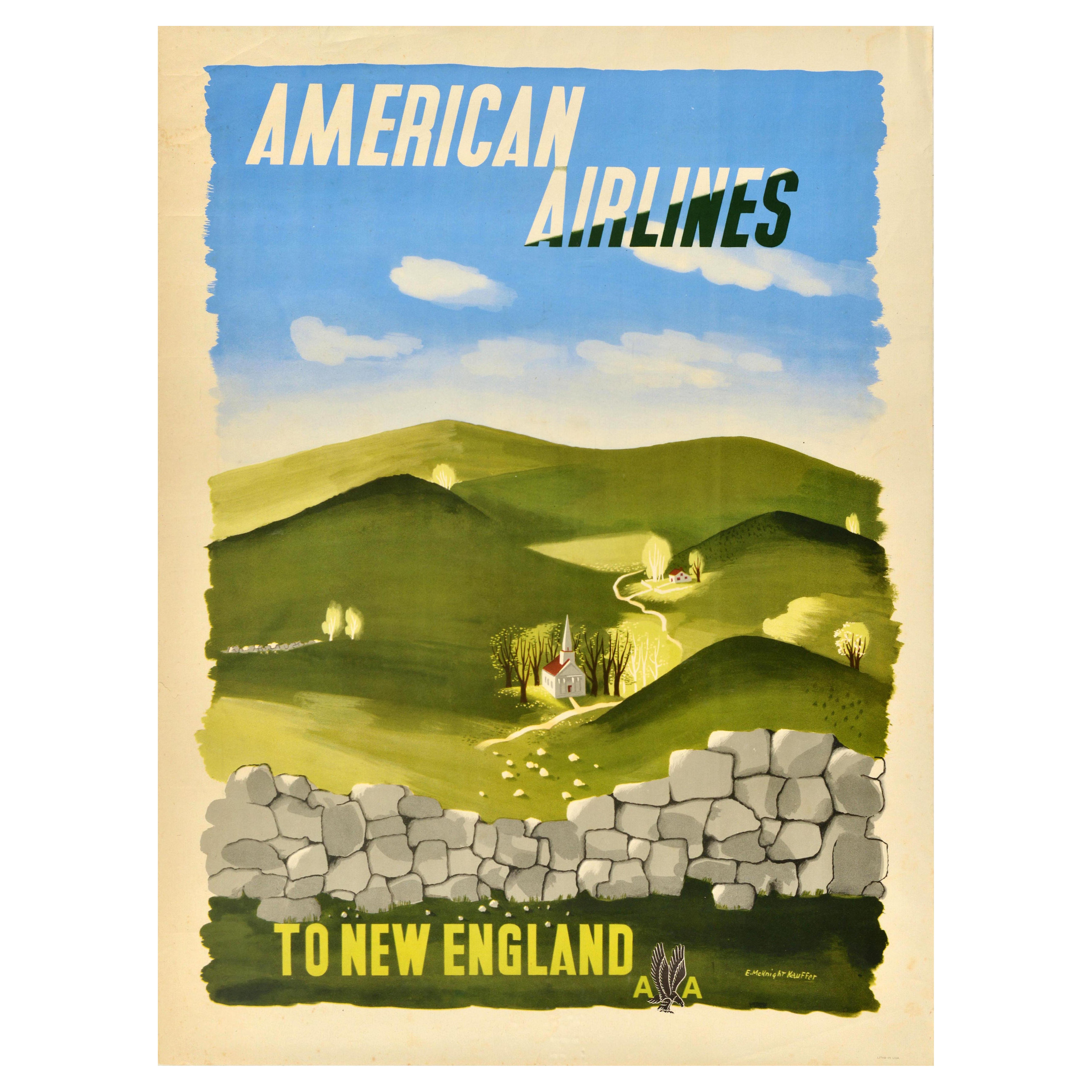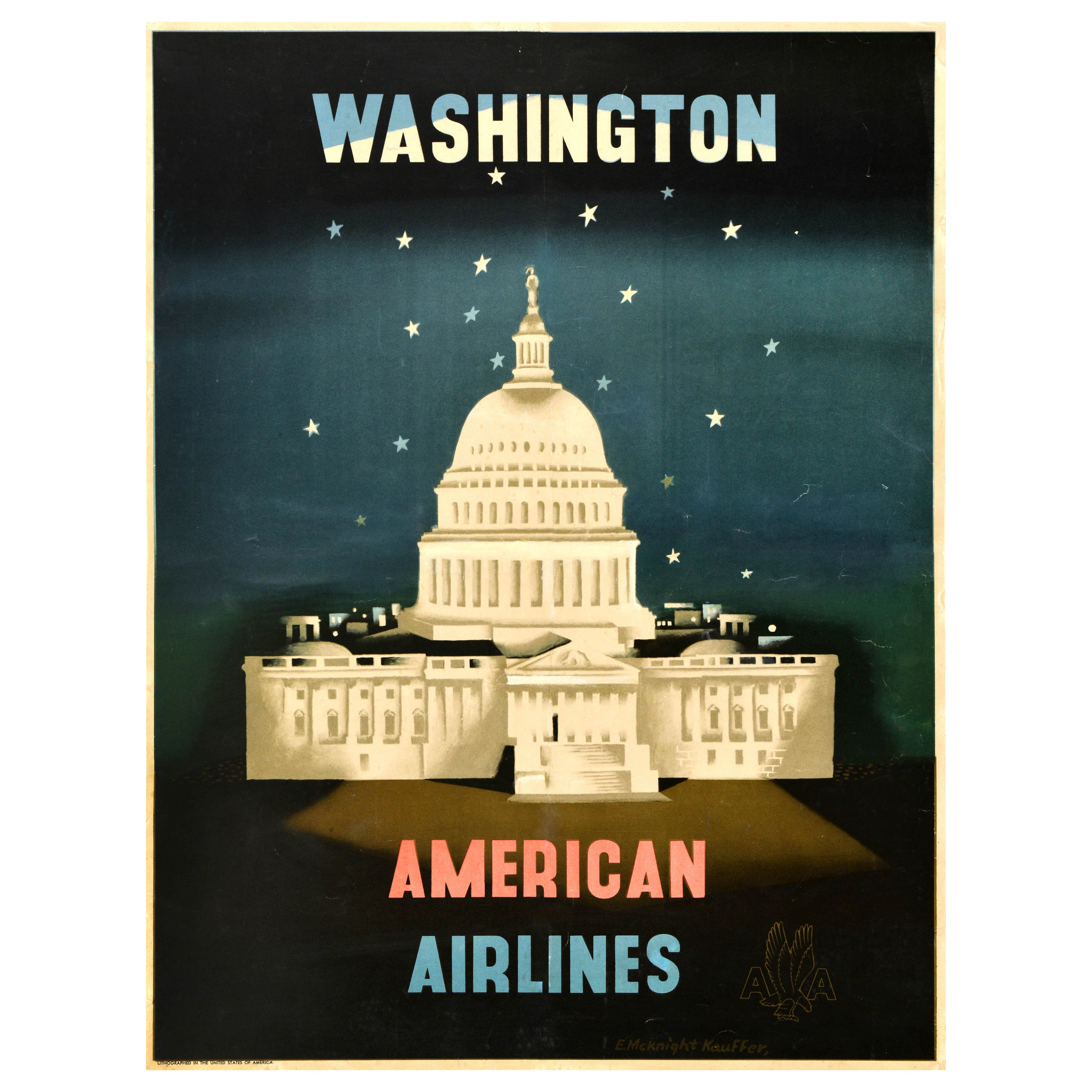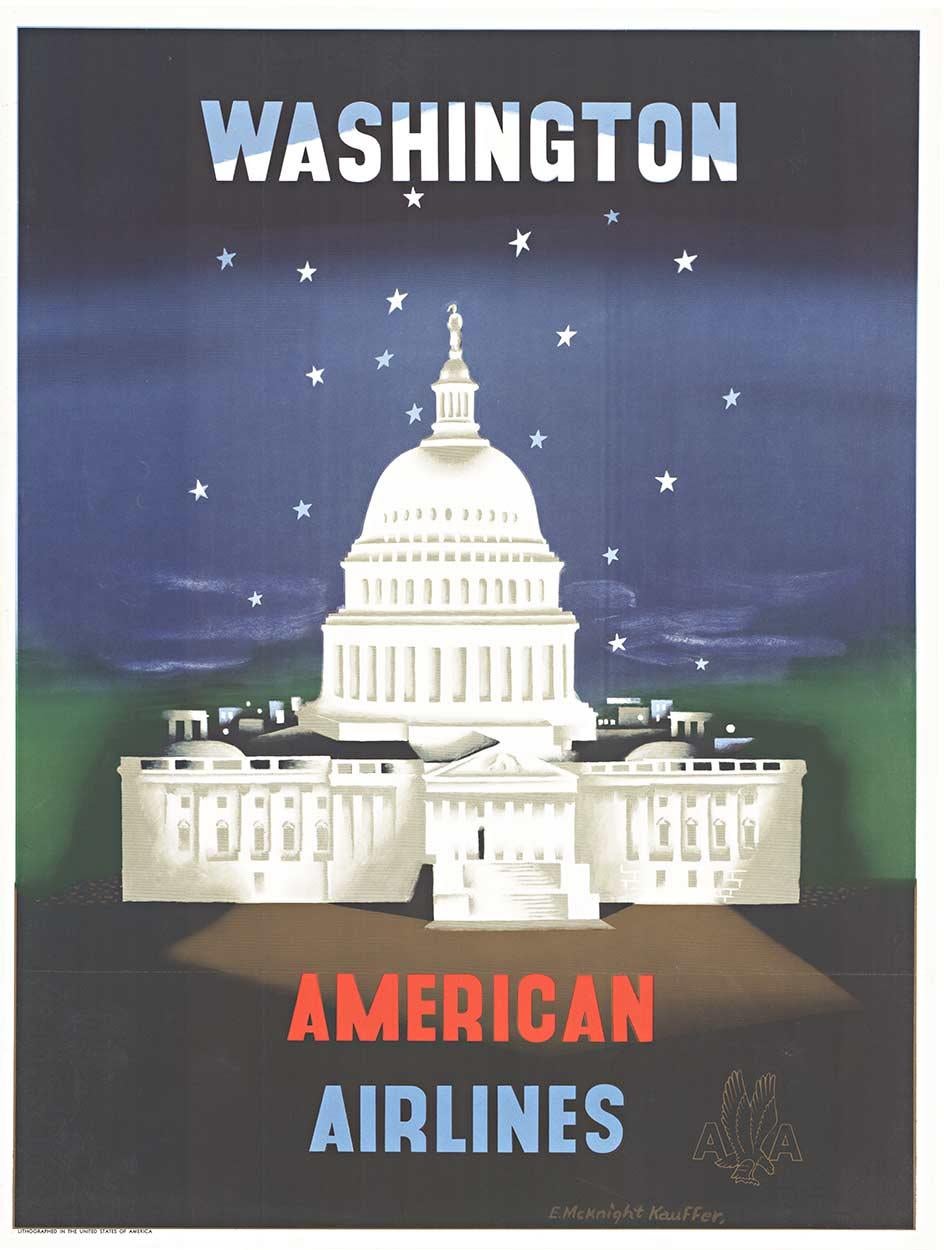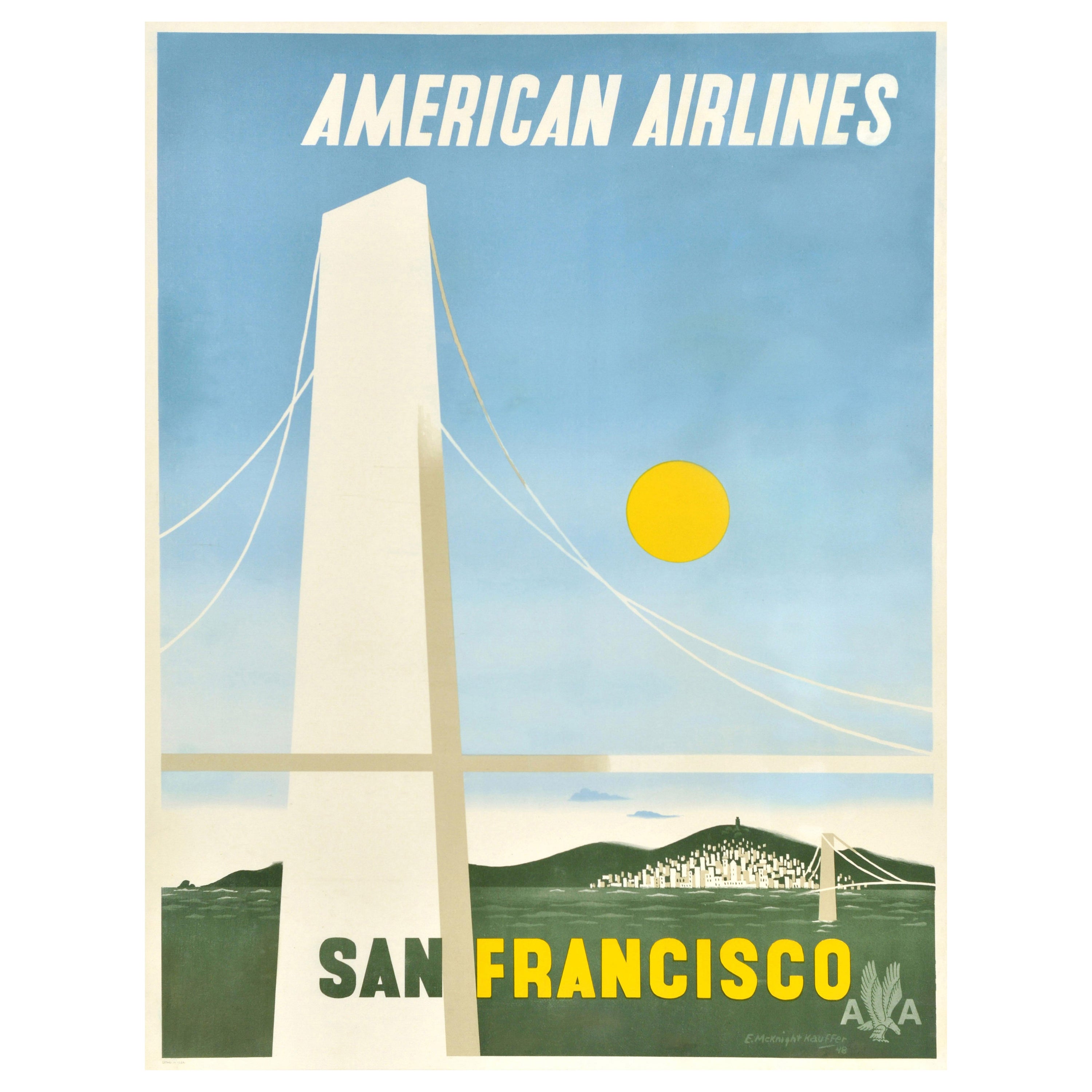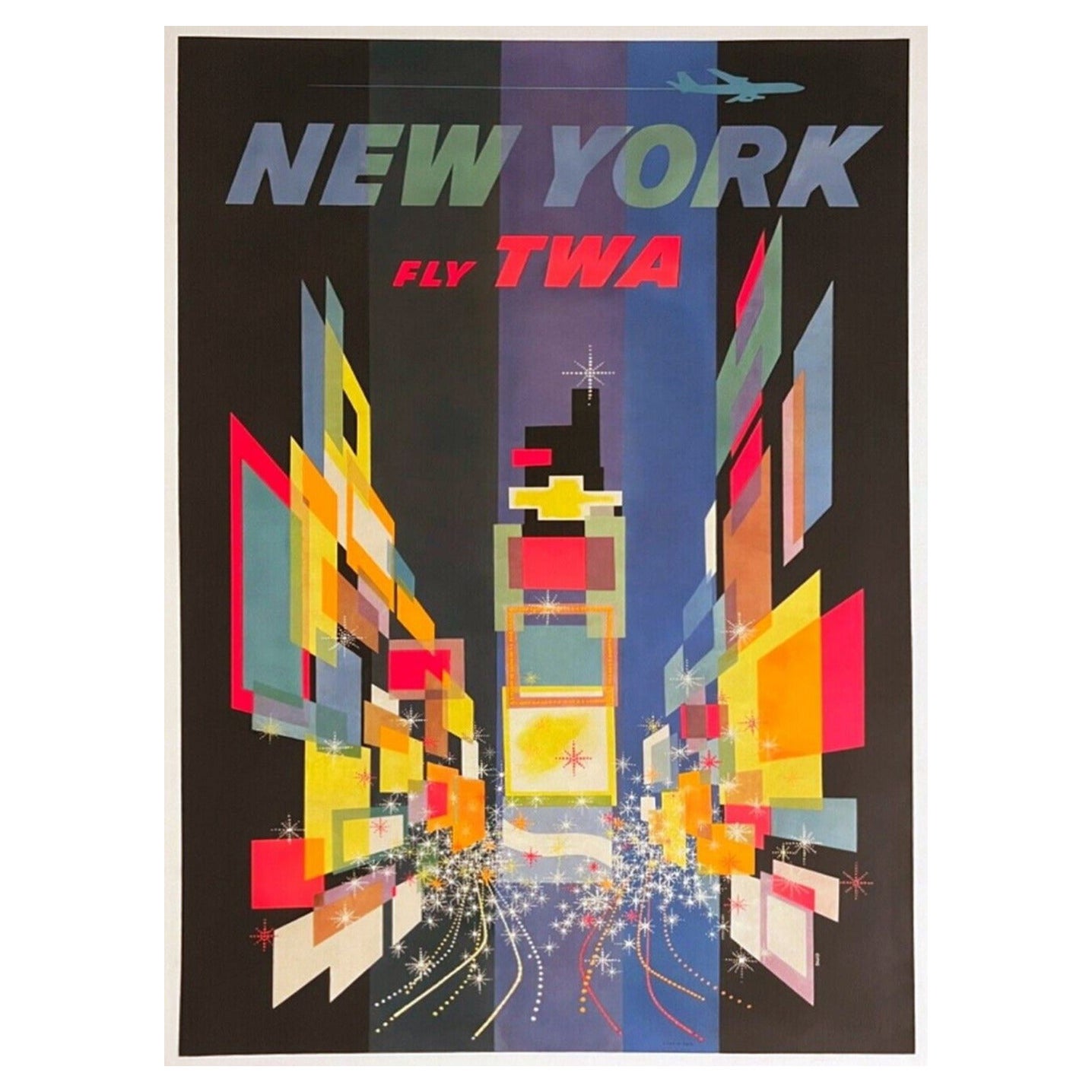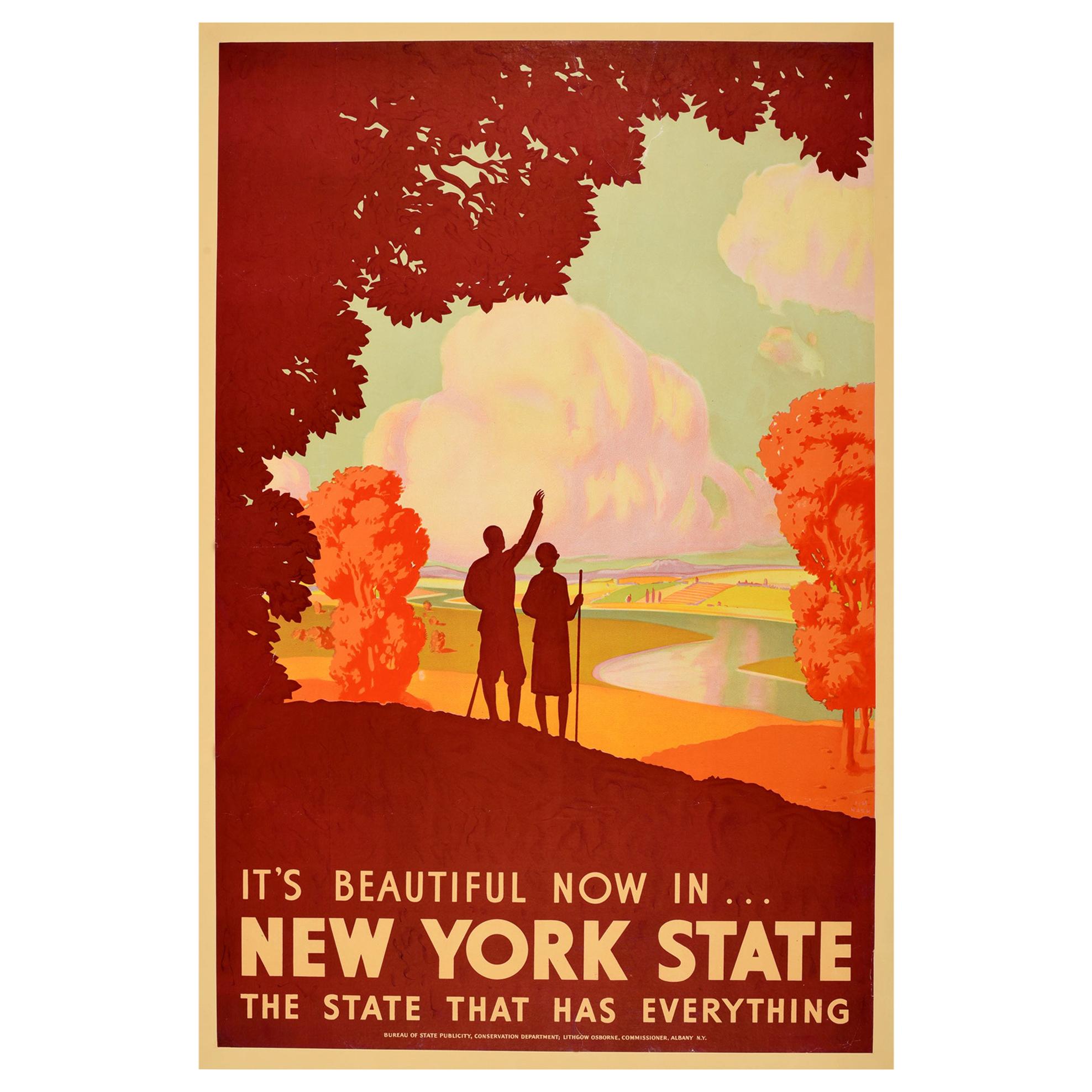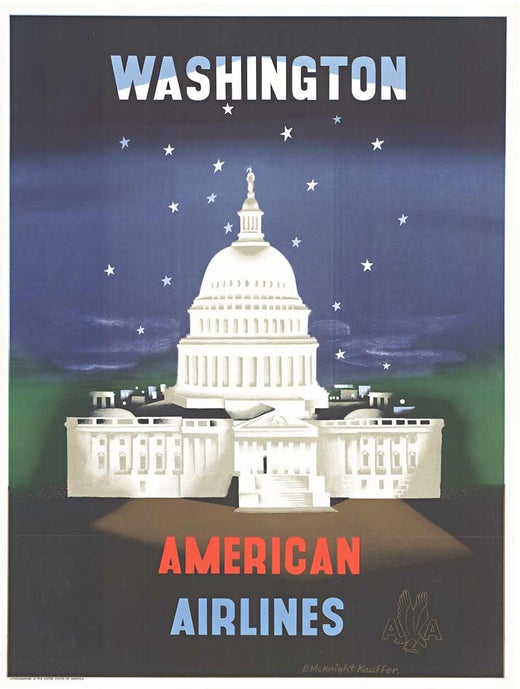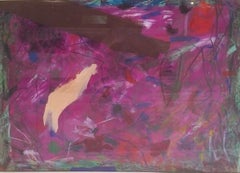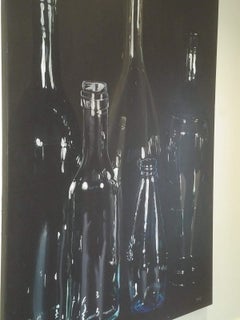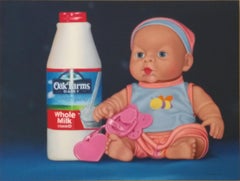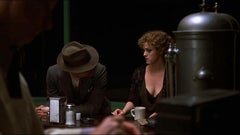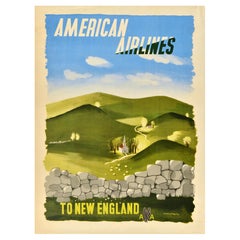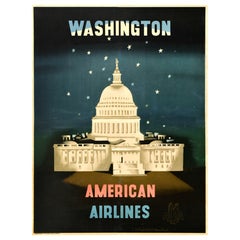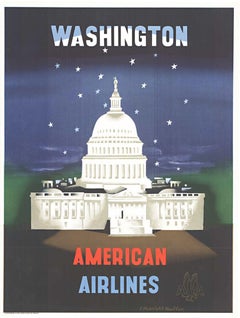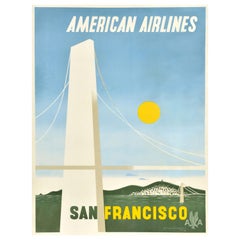Items Similar to Vintage Poster American Airlines Niagara Falls Edward McKnight Kauffer
Video Loading
Want more images or videos?
Request additional images or videos from the seller
1 of 25
Edward McKnight KaufferVintage Poster American Airlines Niagara Falls Edward McKnight Kauffer1948
1948
$990
£744.72
€862.72
CA$1,395.70
A$1,552.11
CHF 814.50
MX$18,927.19
NOK 10,295.54
SEK 9,652.48
DKK 6,439.24
About the Item
Vintage Poster American Airlines Niagara Falls Edward McKnight Kauffer
Good condition -- see all photos and video. This listing includes the frame (which is new). If you prefer to receive this poster in a tube, we have a separate listing for that. The difference in price is the shipping cost.
The photos you see here are photos of the actual poster that you will receive. Many sellers online post using stock photos that often don’t resemble the poster you actually receive.
If you have a friend who is a collector of valuable vintage posters, this would make an amazing gift for them!
This listing is for an authentic travel poster from American Airlines to Niagara Falls, Canada. It is by Edward McKnight Kauffer (1890-1954). He was one of Europe's most prolific and influential advertising poster artists during the twenties and thirties, and as innovative as his more celebrated French counterpart, A.M. Cassandre. This is an original vintage travel poster that is framed in a new frame.
40" Height x 30 1/2" Width
Reference: Kauffer, checklist, p. 305; Voyage, 173; PAI-LXXVII, 59
American Airlines / Niagara Falls. ca. 1948.
- Creator:Edward McKnight Kauffer (1890 - 1954, American)
- Creation Year:1948
- Dimensions:Height: 40 in (101.6 cm)Width: 30 in (76.2 cm)Depth: 1 in (2.54 cm)
- Medium:
- Movement & Style:
- Period:
- Condition:
- Gallery Location:Boca Raton, FL
- Reference Number:1stDibs: LU50415519152
Edward McKnight Kauffer
Edward McKnight Kauffer was an American artist and graphic designer. He lived in the UK from the outbreak of the First World War and is best known for the posters he designed for Shell Mex BP and his 140 London Underground posters. In 1940, Kauffer returned to the USA, where he struggled to obtain work until American Airlines took him on in 1947.
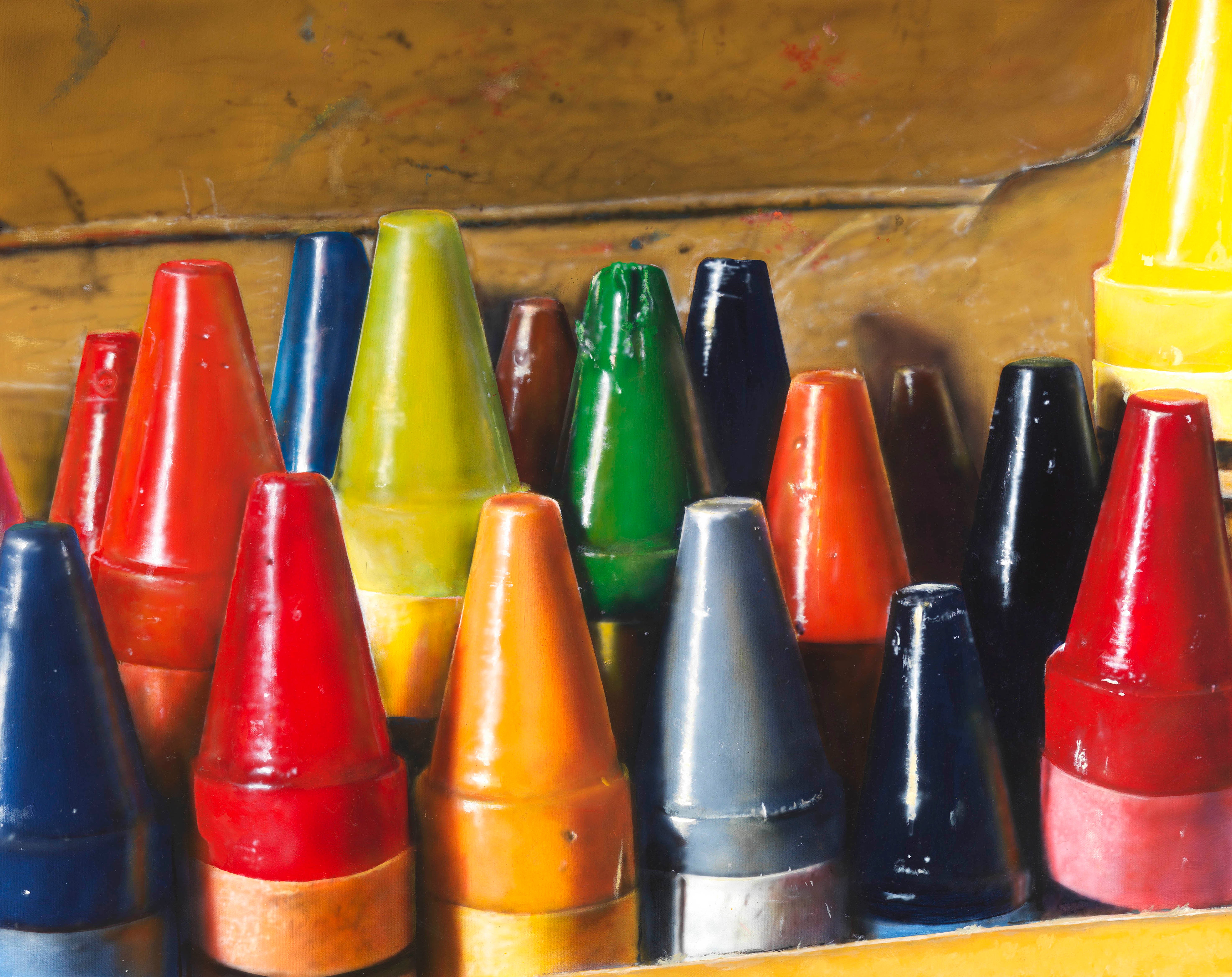
About the Seller
5.0
Vetted Professional Seller
Every seller passes strict standards for authenticity and reliability
Established in 1985
1stDibs seller since 2014
159 sales on 1stDibs
Typical response time: 3 hours
- ShippingRetrieving quote...Shipping from: Boca Raton, FL
- Return Policy
Authenticity Guarantee
In the unlikely event there’s an issue with an item’s authenticity, contact us within 1 year for a full refund. DetailsMoney-Back Guarantee
If your item is not as described, is damaged in transit, or does not arrive, contact us within 7 days for a full refund. Details24-Hour Cancellation
You have a 24-hour grace period in which to reconsider your purchase, with no questions asked.Vetted Professional Sellers
Our world-class sellers must adhere to strict standards for service and quality, maintaining the integrity of our listings.Price-Match Guarantee
If you find that a seller listed the same item for a lower price elsewhere, we’ll match it.Trusted Global Delivery
Our best-in-class carrier network provides specialized shipping options worldwide, including custom delivery.More From This Seller
View AllHamilton Garden at McMaster University
Located in Boca Raton, FL
We are a 1stdibs Platinum Seller with 100% 5-star reviews.
From the Estate of Irving Zucker. Formerly exhibited at the Art Gallery of Hamilton. A beautiful example of Greck's semi...
Category
1980s Figurative Paintings
Materials
Canvas, Gouache
$920 Sale Price
20% Off
Reflections Huge Original Oil Painting by Photorealist Mark Schiff
By Mark Schiff
Located in Boca Raton, FL
One cannot appreciate this huge painting on a computer screen; in real life, it is absolutely amazing.
A collector should consider several factors when deciding from whom to purchase artwork online.
Check the location of the seller. When one buys from a foreign seller, one also has to consider the problems of getting the piece through Customs. There are often delays and considerable fees to pay in order to import the item. When purchasing from us, we ship the same day and you receive it via FedEx the next day, no problems or hassles.
When one purchases from an auction house, one pays a buyer’s premium of anywhere from 23% to 28% over the “hammer price”. So when one “wins” an auction for $20,000, the actual price paid is more like $25,000. By contrast, when purchasing from us, the price agreed to is the price paid by the buyer, no hidden fees.
Secondly, when one purchases from an auction house, the buyer pays the packing and shipping fee, which are usually exorbitant. By contrast, when purchasing from us, the price includes packing and shipping.
About Mark Schiff -- Animated by photographs that reflect his personal life, Mark Schiff’s paintings are fueled by what makes him happy. Through his open touch and signature blending method, he lends his artistic perception to the original photographic compositions captured on his Leica.
Mark’s creative vision has been alive since he was a boy. As a child he spent his summers observing life as he rode the trolley back and forth to art classes at the Pratt Institute. During his future travels to Europe, Mark’s eye for light and photography merged with his passion for painting at the Jeu de Paume in Paris; which triggered his career in photorealism.
Mark is well known for painting objects that people can identify and emotionally connect with. His work is distinctly marked by a rich palette and the luminous range of light he paints into his compositions. Each painting is a true extension of his vision and can take up to 200 hours to complete.
Mark Schiff’s work has been commissioned by the well-known brands The Hershey Company and Tropicana. His private collectors include A-list celebrities and also corporate collectors in the US and abroad.
Possessing a strong philanthropic nature, Mark donates both his time and works to charitable organizations such as Big Brothers Big Sisters, The Ronald McDonald House, Make-A-Wish Foundation, The Humane Society and the Special Olympics...
Category
21st Century and Contemporary Photorealist Interior Paintings
Materials
Canvas, Oil
$2,240 Sale Price
20% Off
Oak Farms Original Oil Painting by Ralph Stearns
By Ralph Stearns
Located in Boca Raton, FL
One cannot appreciate this painting on a computer screen; in real life, it is absolutely amazing. Because you cannot appreciate it on a computer screen, our gallery has a unique pol...
Category
2010s Contemporary Interior Paintings
Materials
Canvas, Oil
$1,440 Sale Price
20% Off
Second Light 32″ x 57″
By Randy Ford
Located in Boca Raton, FL
One cannot appreciate this painting on a computer screen; in real life, it is absolutely amazing. Because you cannot appreciate it on a computer screen, our gallery has a unique policy. When purchasing from us, the buyer has sixty days to determine if they want to keep the artwork. If not, the buyer returns the piece to us for full refund, and we pay the shipping both ways!
A collector should consider several factors when deciding from whom to purchase artwork online.
Check the location of the seller. When one buys from a foreign seller, one also has to consider the problems of getting the piece through Customs. There are often delays and considerable fees to pay in order to import the item. When purchasing from us, we ship the same day and you receive it via FedEx the next day, no problems or hassles.
When one purchases from an auction house, one pays a buyer’s premium of anywhere from 23% to 28% over the “hammer price”. So when one “wins” an auction for $20,000, the actual price paid is more like $25,000. By contrast, when purchasing from us, the price agreed to is the price paid by the buyer, no hidden fees.
Secondly, when one purchases from an auction house, the buyer pays the packing and shipping fee, which are usually exorbitant. By contrast, when purchasing from us, the price includes packing and shipping.
Thirdly, when one purchases from an auction house, the sale is final. If one receives the piece and is not 100% satisfied with it, there is nothing the buyer can do about it. They are stuck with it. By contrast, when purchasing from us, the buyer has sixty days to determine if they want to keep it. If not, the buyer returns to piece to us for full refund, and we pay the shipping both ways.
About Randy Ford
Exhibitions of Ford’s work have taken place at Art Karlsruhe, Karlsruhe, Germany, Editions/Line Gallery, Marlton, NJ, Edward Hopper House Museum, Nyack, NY, Galería artelibre Zaragoza,Spain, Hughes Gallery, Boca Grande, FL, J. Willott Gallery, Palm Desert, CA, Jones & Terwilliger Galleries, Palm Desert, CA, Kenise Barnes Fine Art, Larchmont, NY, M.A Doran Gallery, Tulsa, OK, Plus One Gallery, London, England, Rosenfeld Gallery, Philadelphia, PA, Sherry French Gallery, New York, NY, Stricoff Fine Art, New York, NY, Trudy Labell Fine Art, Naples FL...
Category
2010s Photorealist Interior Paintings
Materials
Oil
Haldeon Diner 40″ x 60″
By Randy Ford
Located in Boca Raton, FL
One cannot appreciate this painting on a computer screen; in real life, it is absolutely amazing. Because you cannot appreciate it on a computer screen, our gallery has a unique policy. When purchasing from us, the buyer has sixty days to determine if they want to keep the artwork. If not, the buyer returns the piece to us for full refund, and we pay the shipping both ways!
A collector should consider several factors when deciding from whom to purchase artwork online.
Check the location of the seller. When one buys from a foreign seller, one also has to consider the problems of getting the piece through Customs. There are often delays and considerable fees to pay in order to import the item. When purchasing from us, we ship the same day and you receive it via FedEx the next day, no problems or hassles.
When one purchases from an auction house, one pays a buyer’s premium of anywhere from 23% to 28% over the “hammer price”. So when one “wins” an auction for $20,000, the actual price paid is more like $25,000. By contrast, when purchasing from us, the price agreed to is the price paid by the buyer, no hidden fees.
Secondly, when one purchases from an auction house, the buyer pays the packing and shipping fee, which are usually exorbitant. By contrast, when purchasing from us, the price includes packing and shipping.
Thirdly, when one purchases from an auction house, the sale is final. If one receives the piece and is not 100% satisfied with it, there is nothing the buyer can do about it. They are stuck with it. By contrast, when purchasing from us, the buyer has sixty days to determine if they want to keep it. If not, the buyer returns to piece to us for full refund, and we pay the shipping both ways.
About Randy Ford
Exhibitions of Ford’s work have taken place at Art Karlsruhe, Karlsruhe, Germany, Editions/Line Gallery, Marlton, NJ, Edward Hopper House Museum, Nyack, NY, Galería artelibre Zaragoza,Spain, Hughes Gallery, Boca Grande, FL, J. Willott Gallery, Palm Desert, CA, Jones & Terwilliger Galleries, Palm Desert, CA, Kenise Barnes Fine Art, Larchmont, NY, M.A Doran Gallery, Tulsa, OK, Plus One Gallery, London, England, Rosenfeld Gallery, Philadelphia, PA, Sherry French Gallery, New York, NY, Stricoff Fine Art, New York, NY, Trudy Labell Fine Art, Naples FL...
Category
2010s Photorealist Interior Paintings
Materials
Oil
New York City Abstract Expressionist Between Abstraction, Calligraphy & Graffiti
Located in Boca Raton, FL
New York City Abstract Expressionist Between Abstraction, Calligraphy & Graffiti
Vivian Muller presents an homage to Greek and Roman mythology, ...
Category
2010s Abstract Expressionist Abstract Drawings and Watercolors
Materials
Paper, Charcoal
You May Also Like
Original Vintage Travel Poster American Airlines To New England McKnight Kauffer
By Edward McKnight Kauffer
Located in London, GB
Original vintage travel advertising poster - American Airlines to New England - designed by one of the most renowned poster artists of the 20th century Edward McKnight Kauffer (1890-...
Category
Vintage 1950s American Posters
Materials
Paper
Original Vintage Travel Poster Washington American Airlines McKnight Kauffer USA
By Edward McKnight Kauffer
Located in London, GB
Original vintage travel advertising poster - Washington American Airlines - featuring fantastic artwork by one of the most renowned poster artists of the 20th century Edward McKnight...
Category
Vintage 1940s American Posters
Materials
Paper
Original Washington D.C. American Airlines vintage travel poster Midcentury
By Edward McKnight Kauffer
Located in Spokane, WA
Original Washington (D.C.) American Airlines mid-century vintage travel poster. Professional archival linen backed in very fine condition, ready to frame.
Featuring one of the ...
Category
1940s American Modern Landscape Prints
Materials
Lithograph
Original Vintage Travel Poster San Francisco American Airlines McKnight Kauffer
By Edward McKnight Kauffer
Located in London, GB
Original vintage travel advertising poster for American Airlines to San Francisco designed by one of the most renowned poster artists of the 20th century Edward McKnight Kauffer (189...
Category
Vintage 1940s American Posters
Materials
Paper
1960 TWA - New York Original Vintage Poster
By David Klein
Located in Winchester, GB
This poster was created in 1960 for Howard Hughes’ Trans World Airlines promoting their routes to New York. Illustrated by influential American artist David Klein, this design featur...
Category
Vintage 1960s American Mid-Century Modern Posters
Materials
Linen, Paper
Original Vintage Poster It's Beautiful Now In New York State Travel Hiking Fall
Located in London, GB
Original vintage travel poster - It's Beautiful Now In ... New York State The State That Has Everything, featuring a stunning design in late summer early fall autumn colors of deep red, orange and brown shades, yellow and green, depicting the silhouette of a couple hiking in the New York countryside with a tree framing the image next to the man holding one arm in the air and lady holding a hiking stick...
Category
Vintage 1930s American Posters
Materials
Paper
More Ways To Browse
Canada Poster
Canadian Travel Poster
Vintage Poster Canada
A Cassandre
Posters By Cassandre
A M Cassandre
Vintage Posters Cassandre
Artist Mcknight
Canadian Airline Posters
Vintage Breckenridge Posters
Waldo Chase
Alain Manesson Mallet On Sale
Alain Moulis
Alicia Rhett
Bernard Buffet Place De La Concorde
Bernard Gantner Lithograph
Bernard Gantner On Sale
Childe Hassam On Sale
